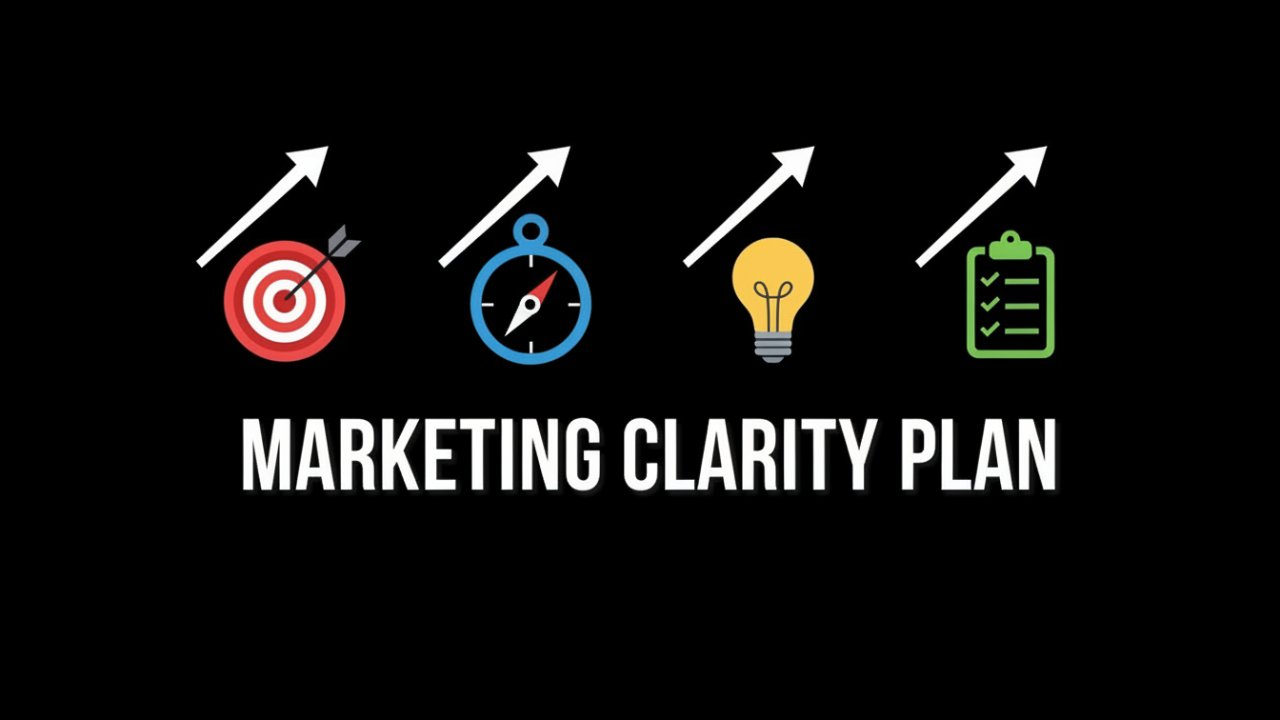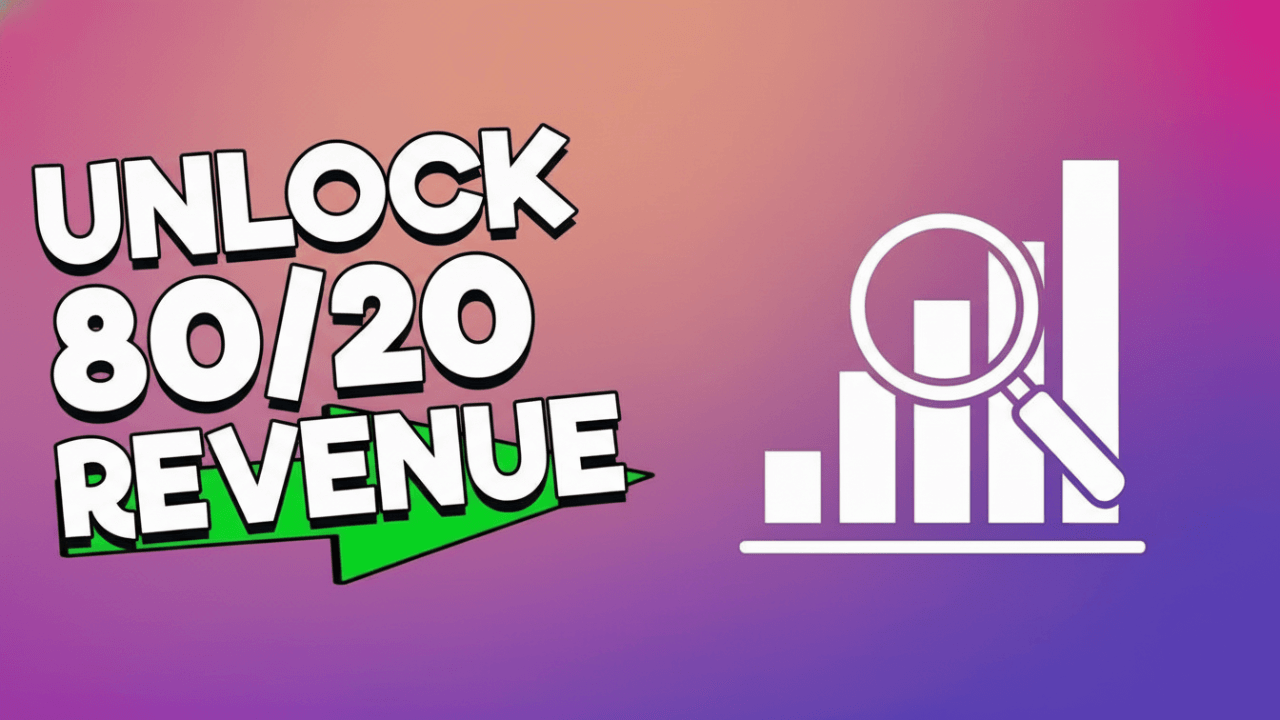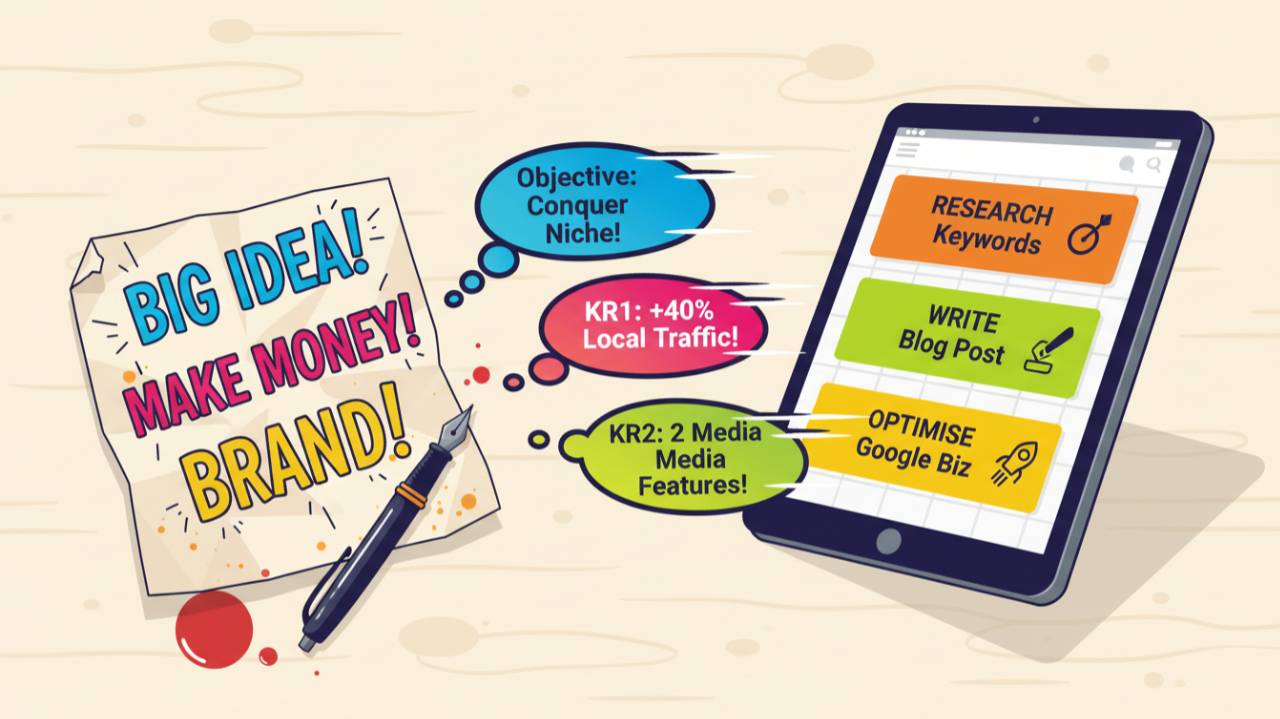What to Do When Your Business Hits a Growth Plateau
There’s a quietness to it, isn’t there? The plateau. It’s not a dramatic crash. There are no sirens, no flashing lights. It’s more like the purr of the engine has just… faded. The frantic, exciting energy of those early growth days, when every new client felt like a victory and every month’s revenue chart pointed sharply upwards, has been replaced by a steady, unnerving flat line.
You’re still working just as hard. The hours are still long. The effort is still there. But the results aren’t. Sales have levelled off. New leads are a trickle, not a flood. That feeling of momentum, the one that got you out of bed in the morning, has been replaced by a nagging sense of being… stuck.
If this sounds familiar, take a breath. A growth plateau is not a sign of failure. To be honest, it’s a perfectly normal, almost inevitable, stage in the life of a business. It’s a signal. It’s your business telling you that the things that got you here are not the same things that will get you there. It's a moment for a strategic pause, not a panic. The path forward isn't about working harder; it’s about thinking differently. It starts with a clear-eyed diagnosis, followed by a smart, deliberate strategy.
Why Businesses Hit a Growth Plateau
It’s tempting to blame the market, the economy, or just a run of bad luck. And sometimes, external factors do play a big part. But more often than not, the real reasons are a mix of what’s happening outside your four walls and what’s happening within them.
Let’s start with the internal stuff, the things we can actually control. One of the most common culprits is what I’d call leadership stretch. In the beginning, you, the founder, are the business. You’re the chief salesperson, the head of marketing, the finance department, and maybe even the one making the tea. This works brilliantly, until it doesn’t. There’s a natural limit to how much one person can do. When your energy and time become the primary bottleneck, the business can’t grow beyond your personal capacity.
Then there are the operational bottlenecks. The systems and processes you cobbled together in the early days, the spreadsheets and manual workflows that were once “good enough,” start to creak and groan under pressure. You spend more time managing the chaos than creating value. Orders get missed, client communication gets sloppy, and the whole operation feels like it’s held together with duct tape and hope. Growth can’t be built on a shaky foundation.
And a big one, especially for service businesses in the UK, is client concentration. You land a huge client, and it feels fantastic. They account for 30, 40, maybe even 50 percent of your revenue. But over-reliance on one or two major accounts is a trap. You become so focused on serving them that you stop hunting for new business. Your growth is now entirely dependent on their budget, their strategy, and their whims. It's a comfortable but dangerous place to be.
Of course, the world outside doesn’t stand still either. Markets become saturated. When you started, maybe you were one of a few offering your unique service. Now, it feels like a new competitor pops up every week. The noise level is higher, and it’s harder to stand out. Customer needs also change. The problem you solved for them two years ago might not be their biggest problem today. Their priorities shift, new technologies emerge, and if you’re not listening intently, you can quickly find yourself selling a solution to an outdated problem.
I remember this happening with an agency I worked with years ago. Their whole lead generation model was built on one specific type of Google Ad campaign. It was a goldmine for about 18 months. Then, Google changed its algorithm, a few big competitors with deeper pockets entered the space, and suddenly their cost per lead tripled. The playbook that had built their business became obsolete almost overnight. That’s the thing about plateaus: they often show up when your old, reliable playbook has simply reached its limit.
Diagnose the Real Problem: The Questions You Need to Ask
Before you can break through a plateau, you have to understand what’s holding you in place. It’s time to stop guessing and start investigating. This isn’t about finding someone to blame; it’s about getting radically curious about your own business. Pour yourself a coffee, grab a notebook, and start asking some tough questions.
First, and most importantly: What has changed in your customers’ world that you may not have noticed? We get so wrapped up in our own operations that we can forget to look up and see what’s happening with the very people who pay our bills. Are they under new financial pressures? Have their internal processes changed? Is there a new trend or technology that’s making your offer less relevant? The best way to find out is to talk to them. Not a sales call, a curiosity call. Pick up the phone and ask a few of your best clients, and maybe even a few who left, what their biggest challenges are right now. The answers might surprise you.
Next, get specific about the numbers. Where exactly are revenues flattening? Averages can hide the truth. You need to break it down. Is the problem at the top of the funnel, meaning you’re not getting enough new leads? Or are leads coming in, but they’re not converting into customers? Maybe your conversion rate is fine, but you’re struggling with renewals and client retention. Or perhaps clients are staying, but they’re not buying more from you through upsells or cross-sells. Each of these is a completely different problem with a different solution. You can’t fix a leaky bucket by just pouring more water in the top.
This leads to the next question: Which of your Key Performance Indicators (KPIs) have stalled or lost their relevance? In the early days, you might have been obsessed with website traffic or social media followers. But are those the metrics that truly drive your business today? Maybe it’s time to focus on customer lifetime value, profit margin per client, or the sales cycle length. If you’re not measuring what matters, you’re flying blind. The plateau might be a sign that your dashboard needs a serious update.
Finally, look inward at your operations. Are your internal processes supporting growth, or has complexity taken over? As a business grows, it’s easy for bureaucracy to sneak in. Simple tasks become multi-step processes. Communication breaks down between team members. You spend more time in meetings about the work than actually doing the work. Has the process become the boss? Be honest about where the friction is. Is your team spending hours on manual tasks that could be automated? Is your project management system a mess? Streamlining your operations can free up an incredible amount of energy for growth-focused activities.
If you’re struggling to get to the root cause, simple tools can help. A basic SWOT analysis (Strengths, Weaknesses, Opportunities, Threats) can provide a great snapshot. Or try the “Five Whys” technique, made famous by Toyota. Start with the problem, say, “Our client retention has dropped.” Then ask why. “Because our project handovers have been messy.” Why? “Because the team isn’t clear on the new process.” Why? You keep digging until you get to the real, fundamental issue, not just the surface-level symptom.
Strategic Moves to Get Unstuck: Five Proven Ways to Break Through
Once you have a clearer diagnosis, it’s time to take action. The key is not to do everything at once. That’s a recipe for burnout. The goal is to make a few smart, strategic moves that can create new momentum. Here are five proven approaches that I’ve seen work time and time again.
1. Re-segment and Refocus
Often, a plateau happens because you’re trying to be everything to everyone. You’ve diluted your focus. Now is the perfect time to rediscover who your absolute best customers are. I’m not just talking about the ones who pay the most. I mean the ones who are the most profitable, the easiest to work with, and the ones who get the most value from what you do. The 80/20 principle is almost always at play: 80% of your profit (and joy) likely comes from 20% of your clients. Identify that 20% and build a new growth plan entirely around them. Niche down. Instead of being a generic “marketing agency,” become the go-to marketing agency for independent vets in the North of England. This focus makes your marketing more effective, your sales process easier, and your service delivery better.
2. Diversify Your Acquisition Channels
Remember that agency whose Google Ads well ran dry? They were a classic case of over-reliance on a single channel. If 100% of your leads come from one place, whether it’s referrals, social media, or paid ads, you’re vulnerable. The goal isn’t to be everywhere, but to build one or two new, reliable streams of new business. If you’re heavy on referrals, could you build a strategic partnership programme with complementary businesses? If you’ve only ever used Instagram, could you start creating valuable, problem-solving content on LinkedIn to attract a different type of client? Adding a new channel is an experiment, so treat it as such. But diversifying is crucial for long-term stability and growth.
3. Optimise Your Downstream Stages
Everyone gets obsessed with acquisition, with getting new customers in the door. But often, the fastest path to growth is by focusing on the customers you already have. This is about improving your downstream stages: onboarding, retention, and expansion. How could you make your new client onboarding experience so amazing that they’re blown away from day one? A better onboarding process leads directly to better retention. And what about expansion? Are there other problems you could solve for your happy, existing clients? It is so much easier and cheaper to sell a new service to a current client who already trusts you than it is to acquire a brand-new one from scratch.
4. Refresh Your Offers and Pricing
Sometimes your business is stuck simply because your offer has gone stale. The package or service you created two years ago might not be what the market needs today. This is your chance to innovate. Could you introduce new value tiers, like a premium “done-for-you” package or a more affordable “done-with-you” coaching option? Could you bundle services together to create a more comprehensive solution? Maybe it’s time to add a complementary service that your clients are always asking for. And don’t be afraid to review your pricing. If you haven’t increased your prices in years, despite getting better and more efficient at what you do, you’re leaving money on the table that could be fuelling your next stage of growth.
5. Systematise Experimentation
The biggest mistake I see business owners make on a plateau is betting the farm on one big, risky idea. A better approach is to think like a scientist. Create what I call a “growth backlog,” which is just a fancy name for a list of smart ideas and educated guesses. Formulate them as hypotheses: “We believe that by hosting a monthly webinar for existing clients, we can increase upsell revenue by 15%.” Then, run small, fast experiments to test these ideas. Run one or two tests a month or per quarter. Some will fail, and that’s fine. You’ll learn something and move on. But some will work. And when you find a winner, you double down on it. This creates a culture of continuous improvement and ensures you’re always finding new, small ways to generate momentum.
The Leadership Mindset Shift
Breaking through a plateau isn’t just about tactics and strategies. It’s also about you, the leader. How you frame this period internally, for yourself and for your team, is critical. If you see it as a failure, that sense of defeat will permeate the entire business. But if you can view it as a necessary and valuable learning phase, it can become a catalyst for your best work yet.
This is a time for reflection. Step back from the daily grind and ask yourself some big questions. Is the vision for the next stage of the business crystal clear in your own mind? If it’s fuzzy for you, you can be sure it’s completely opaque to your team. Are you communicating openly and honestly with them about the challenges and the plan to move forward? Nothing kills momentum faster than uncertainty and a lack of direction from the top.
I strongly recommend scheduling a recurring “strategy reset” session, maybe once a quarter. Get out of the office. Turn off your phone. Spend a day working on the business, not just in it. Use this time to review what’s working, what’s not, and what new opportunities are emerging on the horizon. This is your time to be the strategist, the visionary, the leader your business needs to guide it into its next chapter.
An Actionable Checklist to Get Moving
Theory is great, but action is what creates change. Here’s a simple checklist to help you get unstuck, starting today.
- Conduct a team workshop. Get your key people in a room and have an honest conversation about the plateau. Align on what you all believe the core issues are.
- Review your data. Dive into your financial and operational metrics from the last 12 months. Pinpoint exactly where things have gone flat or started to decline.
- Interview five customers and three lapsed leads. Ask them about their current challenges and why they chose to work with you (or not). Look for the hidden trends.
- Build a 90-day experiment cycle. Choose one or two of the strategies above and design a small test. What’s one new marketing channel or one refreshed offer you can trial in the next 90 days?
- Communicate progress often. Share the plan, the experiments, and the small wins with your team. Rebuilding momentum is a team sport, and communication is the fuel.
Conclusion: Turning a Plateau into Progress
Every single successful business you admire has faced a growth plateau. Probably several. These moments are not roadblocks; they are forks in the road. They force you to pause, reassess your map, and choose a new, more intentional path forward. They are a gift, even if they don’t feel like one at the time. They are an invitation to get smarter, more focused, and more resilient.
By diagnosing the real root causes, making deliberate strategic moves, and shifting your own mindset from frustration to curiosity, you can turn this period of stagnation into a launchpad for your next, most meaningful phase of growth. This isn’t the end of the story. It’s the start of a much more interesting chapter.
If you’re standing on that plateau and feeling unsure about the next step, you don’t have to figure it out alone. A fresh perspective can make all the difference.
Book a Growth Coaching Session with us, and let’s map out your path forward together.
Additional Resources:
For further material on related topics, consider exploring the following:
Ready to Turn Information into Action?
Reading about solutions is one thing, but implementing them when you're already overwhelmed is another. If you're ready to stop spinning your wheels and get a clear, actionable plan, it's time to talk to someone who's been in the trenches.
Adam isn't just a coach; he's a fellow business builder who can help you find the clarity you need in a single hour. Book a no-obligation, honest conversation with Adam at New Way Growth. No sales pitches, just a genuine chat about your goals and the obstacles holding you back.
Reclaim your momentum, energy, and confidence.
Contact us
now and let’s turn your business strategy into unstoppable progress.
Phone: 0330 311 2820
We look forward to helping you discover your unique path to growth, strategies that fit you - not the other way round.
Pay It Forward! Sharing Is Caring!











